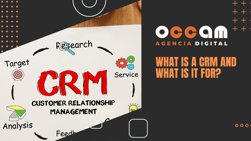Index Content
Any marketing strategy that really wants to sell has two fundamental pillars on which to succeed, on the one hand, the customer and on the other hand, the product, the most important thing is that the customer is satisfied with our products and services, for this we must work well the quality and functions of our products until they meet the expectations of our customers to meet their needs.
what is the MVP?
The MVP, which stands for Minimum Viable Product, is a product that has the minimum number of features and functions that meet the basic needs of customers. This allows the company to learn as much as possible about their potential customers with the minimum effort, they learn how to solve the needs of their customers and how much they would be willing to pay for it. With this, the aim is to improve the product as much as possible as soon as possible to be able to launch it on the market to a wider audience.
Eric Ries, who is the creator of the Lean Startup method, believes that this method is essential for an emerging company to reduce risk and increase innovation within the project. This will be achieved by taking into account all aspects of your product, i.e. functionality, reliability, usability and design, often companies focus only on functionality to launch the MVP, which is a big mistake.
Characteristics of the Minimum Viable Product
If we are very clear about the characteristics of our minimum viable product, we will not waste resources on a product that nobody wants or needs, these are the key features:
- Design
The design is very important, since it is what delights the user, if our potential customers are attracted by our product, we will have done a great part of the way. - Usability
It has to have enough value so that they are willing to buy it, that is to say, if the product is useful, they will want to have it, if they see that it is not useful, they will not want it. - Reliability
This implies that consumers can trust the product from the moment it goes on the market, this has a lot to do with reputation and brand image. - Functionality
This product must have the minimum functionalities to be useful, it must satisfy the demands and needs of consumers, this will allow the functions to be evaluated and other more advanced phases to be implemented.
what is the MVP for?
There are many reasons to implement the MVP in your strategy, we will tell you all about them, read on.
What comes to mind at first is clear, to save money for your startup, but this is not the only benefit we can find, on the other hand, we get a much better understanding of the interests of customers and the impression they have of the product without having to develop it completely.
It is important to know this as soon as possible, i.e. the sooner you know if your product interests your audience, the less effort you will be making and the less money you will be investing. Thanks to this, you are making certain adjustments with the launch of your product, such as bringing it forward, cancelling it or improving it to adapt it to the needs of the market. We can say that what the MVP works for is for a work team to get the job of launching a product done in the best possible way thanks to the feedback obtained.
In short, an MVP helps you with several aspects:
- You get the product to market in the shortest possible time.
- You reduce product implementation costs.
- Before you fully develop your product you can test the demand for it in the market.
- You avoid large capital losses or unexpected failures.
- Know perfectly which aspects of your product work and which do not.
- With the MVP you are working directly with your customers and can analyse their behaviour and preferences.
- You are also expanding and optimising your customer database.
how to create a Minimum Viable Product?
We have already explained what the Minimum Viable Product is, we have defined its characteristics and we have talked about its importance within our marketing strategy.
- Identify the objectives
The first step before building an MVP is to identify the long-term objectives we have within the business with the product we are going to build and launch on the market. They can be simply to solve a lack in the market or improve an existing solution. In order to validate or not these hypotheses with the MVP it is necessary that we first define in a concrete way the objectives we want to reach, a good way is to do it using the SMART methodology. - Research MVP implementations
We have to identify many of the factors that will lead us to achieve the objectives previously set, for example:
- Users we want to help
- The actions these users are taking now to achieve their objectives
- What are the needs of the users and quantify what it would cost us to solve them
- Solutions we can offer users to solve these needs or pain points.
All this will ultimately allow us to meet the objectives we have set in point one, so to meet these objectives, we will have to include all the necessary functionalities. It is important to remember that for an MVP to be viable, it has to meet two essential requirements:
- The user must be able to perform a task from start to finish.
- The company can commercialise the MVP.
- Prioritise functionality
To prioritise which functionalities to include in our MVP we must take into account two factors:
- The positive impact on the user journey
- The cost of implementing the product
- Plan the development
What we are going to investigate at this point is how to make the MVP a reality, we must validate a market hypothesis with it, so we must have a finished product with a minimum of cost and effort, not just anything will do. Once we have it on the market is when we must analyse whether we can build the developed product.
And above all, to create an MVP you have to take into account that it has to fulfil a series of characteristics:
- Accessible
It has to be accessible to your customers, both in terms of usability and price. Take into account all aspects and above all, facilitate access to your MVP. - Effective
You need to have time, time to be able to fail in the creation of the MVP and to be able to fix it before implementing it and launching it to the market. You must optimise with the resources you have at your disposal. - Intuitive
Product design should always be intuitive, otherwise users will give up if they can't use it. Launch your product and adapt it to the needs of your audience. - Optimised
You have to make a product that users want to buy but in a simple way, that's the real challenge, optimise it and they will want to buy it. - Useful
The most attractive thing for a customer is a product that they will use and that will be useful day to day. If they don't think it will be useful, they won't want to buy it.
After all this, what are you waiting for to implement your MVP and save on costs?

-1.webp?width=200&name=imagotipo_occam%20(1)-1.webp)



